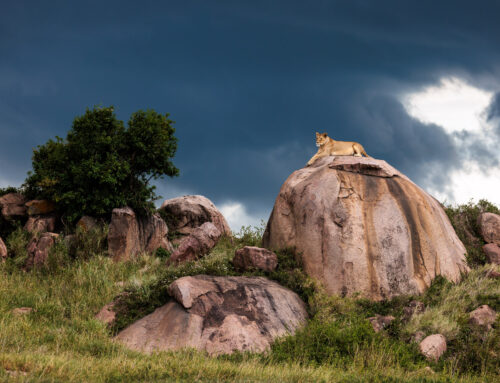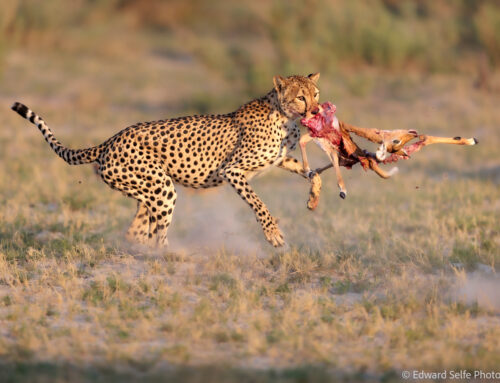Even though I have lead many safaris this year, and in many years past, I look forward to each one intensely. The chance to meet new people and to explore outstanding wild areas with the Luangwa guarantee of stunning sightings. And of course, there is always the beguiling attraction that each safari might be the one where you find something truly unusual.
Nick & Caroline Gill joined me for a week at Flatdogs Camp and Nsefu Camp in two different areas of the park. Sadly another couple were not able to join us at the last minute, so we were a group of only 3 heading into the bush each day. This did mean that I was able to concentrate my efforts on a smaller group helping them build their skills, offering a range of sightings and opportunities to practice techniques and try new ideas. Of course, Luangwa didn’t disappoint, and I hope you enjoy reading this write-up.
Our safari started with a bang….!
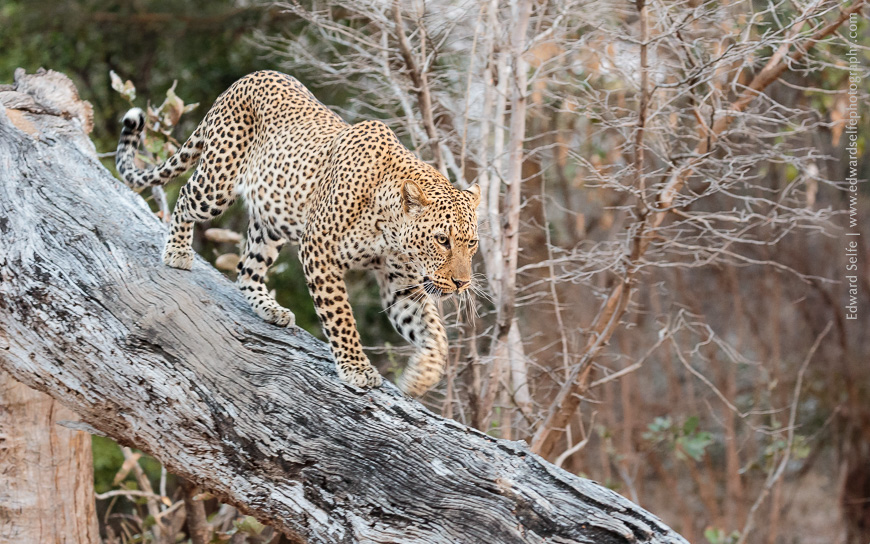
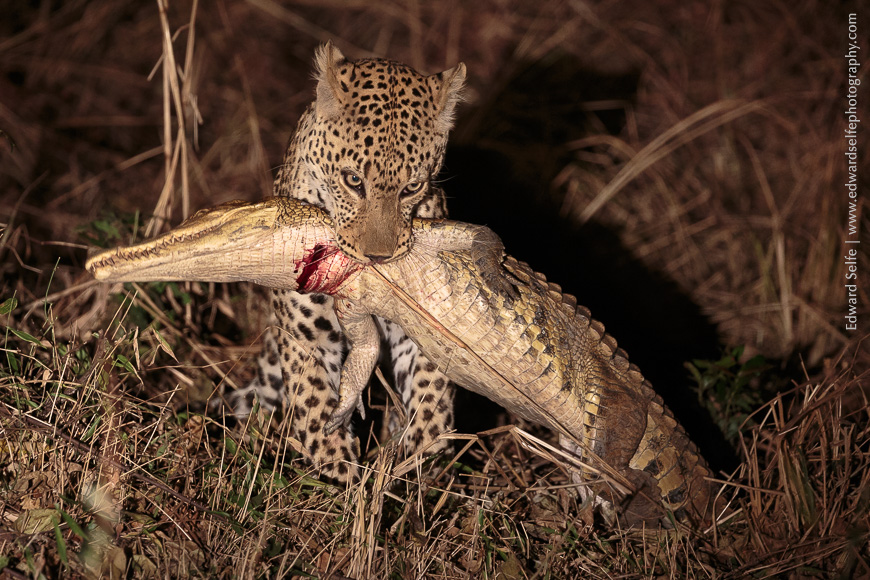
The following morning, we set out to reach a beautiful forested area hoping to find some elephants that we could place among the ancient leadwood trees. On the way, a herd of resting hippos suddenly decided to rush into the water, perhaps spooked by a change in the wind which then carried our scent towards them.
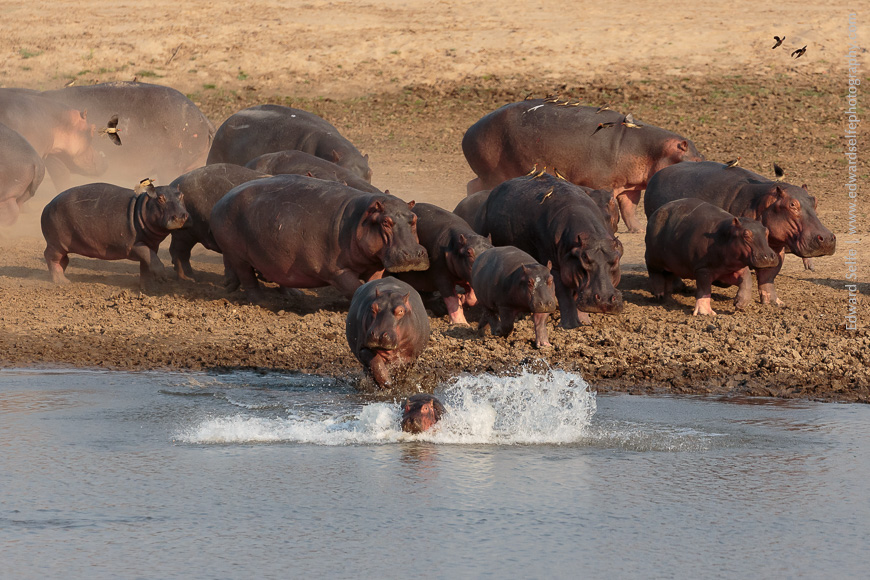
Reaching the forested area early in the morning gave us stunning light. But as luck would have it, the elephants that were there were all orientated the wrong way for the beautiful light! Not to worry, we took the chance to compose some monochrome images, concentrating more on the shapes than the colours.
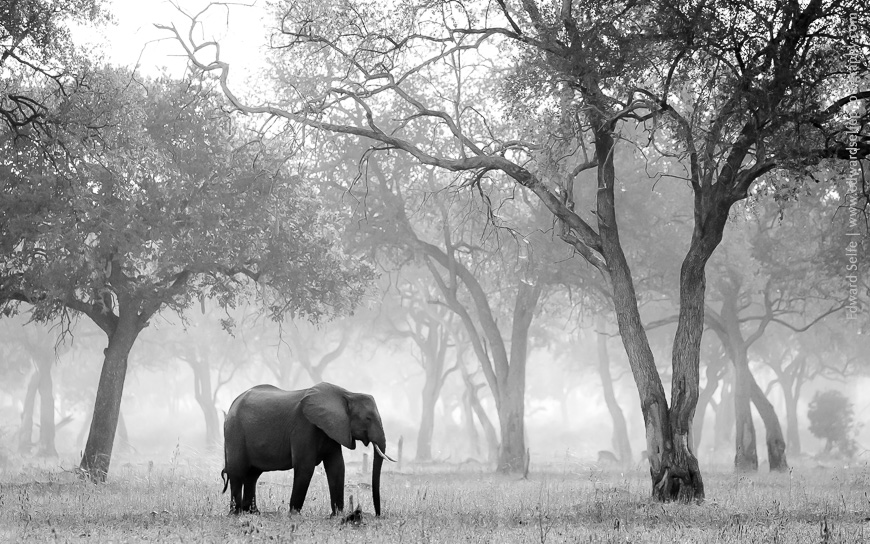
After two short days at Flatdogs Camp – which shot by in a blur of leopard and croc encounters! – we set out for Nsefu Camp in the remote Nsefu Sector of the National Park. Nsefu Camp is one of Robin Pope Safaris’ flagship properties, and is placed in a prime location. With National Park all around it, and stunning river along the front (with more National Park on the far side) it is a truly immersive wildlife experience. In fact, many of the best sightings we enjoyed in the 4 days at Nsefu were either within sight of camp, or started off at the camp!
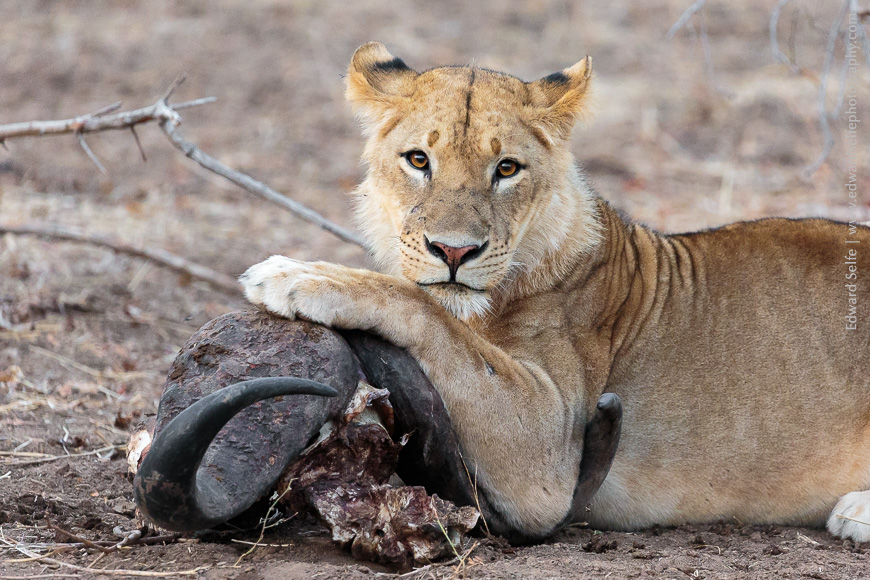
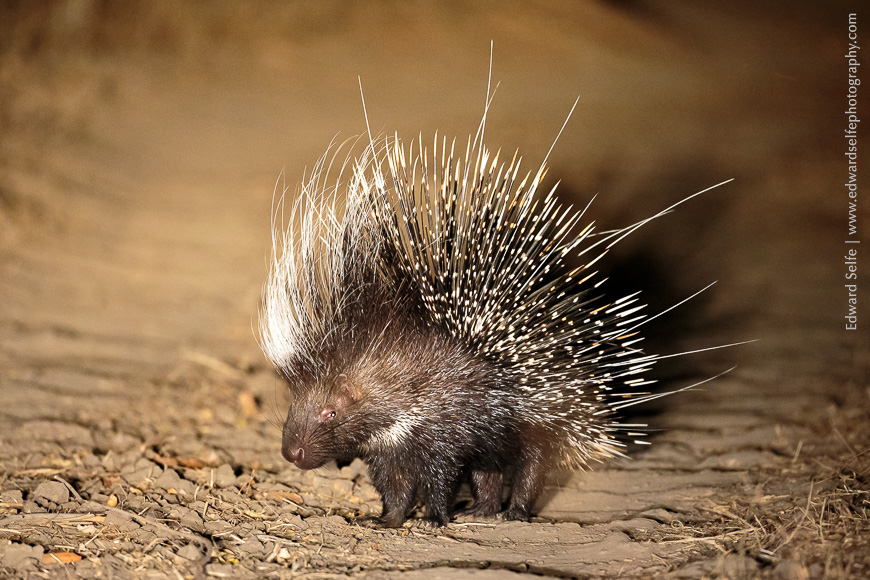
Wondering what the first morning at Nsefu would deliver, we set out slowly from camp, listening, watching and reading the bush. When you stay inside the National park, there is no need to “go” anywhere as the game is all around, and that brings the predators too. After our 3rd or 4th listening stop, I heard outraged baboons suddenly erupt into angry calls nearby. I knew immediately what that particular sound meant – one of their number had been killed!
Of course, there’s no guarantee that there will be anything to see, so I merely mentioned to my guests that we needed to move quickly to find out what was upsetting the baboons. On arrival in the ebony grove (within sight of camp!) we found an extraordinary scene unfolding. Most of the baboon troop was in the trees, with only the large males on the ground. One male, with a deep fresh cut on his lip, was tending to the body of a mortally wounded baboon on the ground. The female was still moving, but had clearly been attacked, almost certainly by a leopard!
We positioned ourselves nearby and waited, of course! The males were standing around, occasionally giving out their “wa-hooo” alarm call for leopard, and we could tell that the cat was nearby. Knowing that it would want to return to claim its meal, we chose a good spot for taking photos and waited. We were kept busy by the sight of one of the males grooming the body of the dead female – it was quite poignant. Eventually, the leopard appeared….
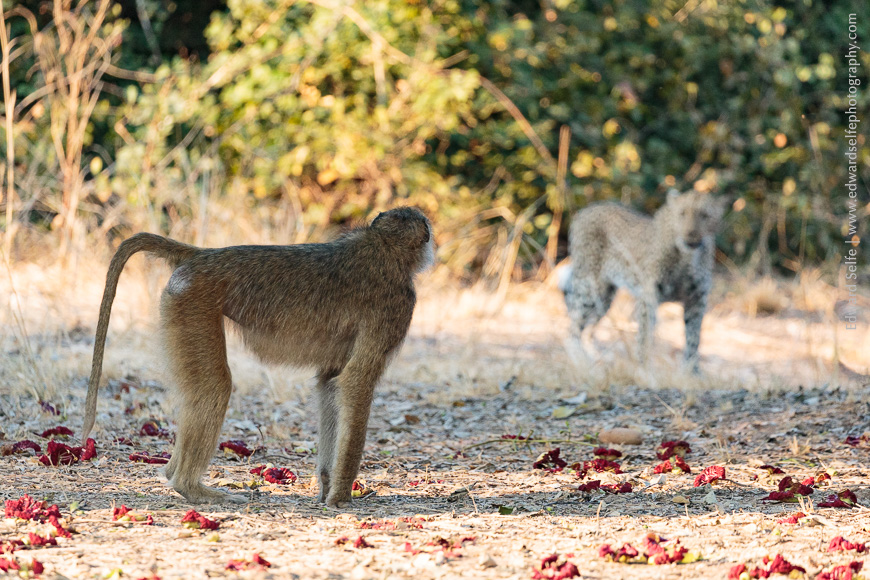
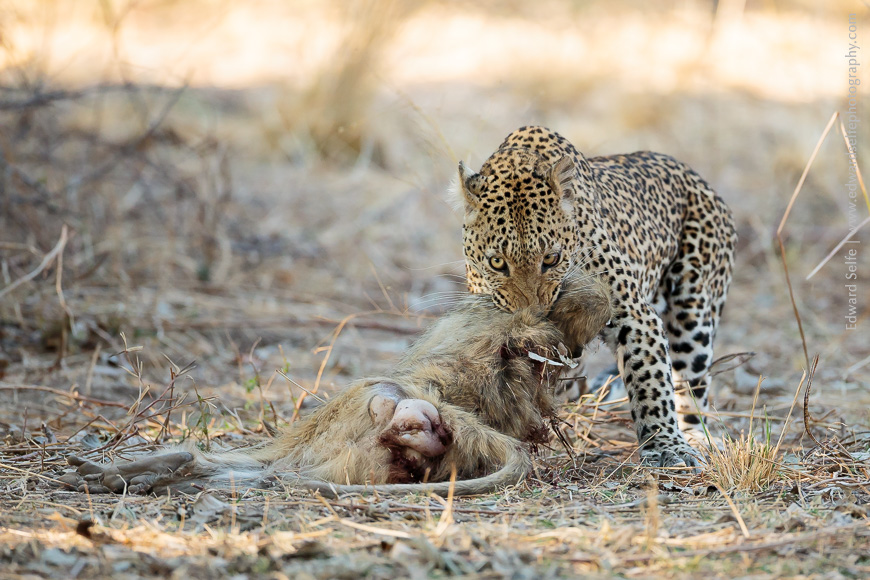
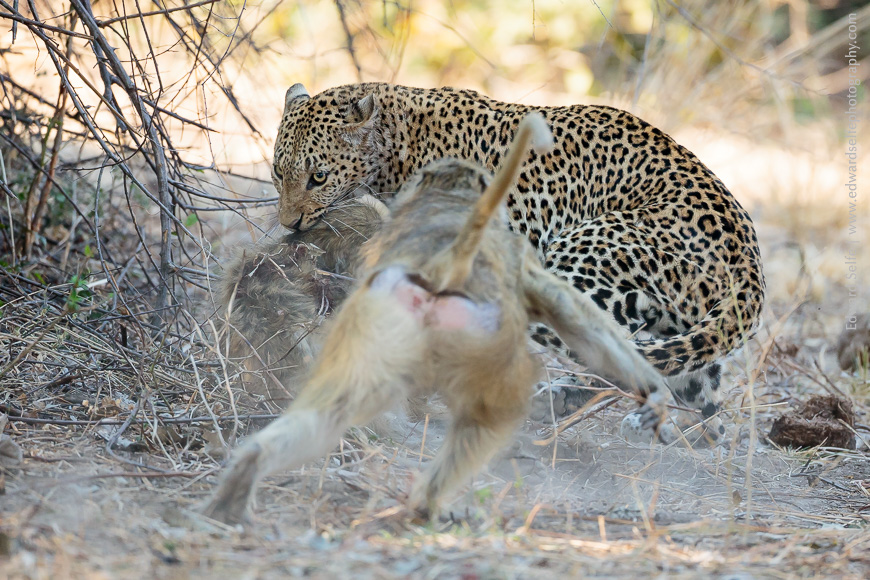
Wondering if that was the highlight sighting of the week – it wasn’t! – we continued our morning drive but could talk of little else than the encounter we had just observed. As Nick said, it felt like actors were putting on a show for us, with leopards and baboons entering and leaving stage right and left…..but of course, the joy of safari that you are observing Nature doing what it does. In a world where we manufacture most things and most experiences, it’s a pleasure to watch something that we have had no part in creating. These events go on whether we are there to watch them or not.
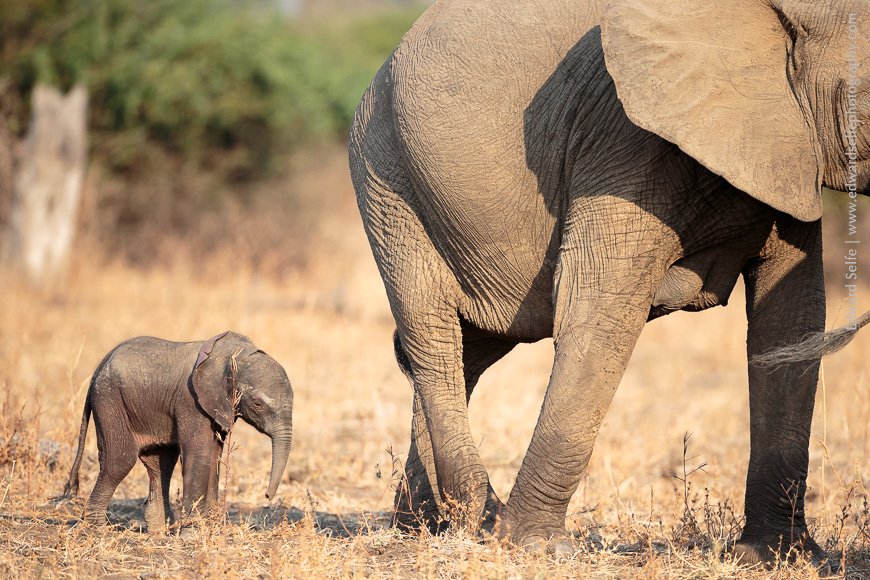
Each morning, as I get dressed I listen to the bush all around, searching for clues of what Nature will give us that day. That morning I heard occasional baboon warning barks from behind camp, and planned to search the area as the first priority of the day. I didn’t even need to search, because during our light breakfast, a small pack of 5 Wild Dogs ran through the camp, heading north on the hunt! We dropped everything to follow them, and spent the next 2 hours tracking them through the bush, trying to anticipate their movements and work out where – if at all – they would make a kill.
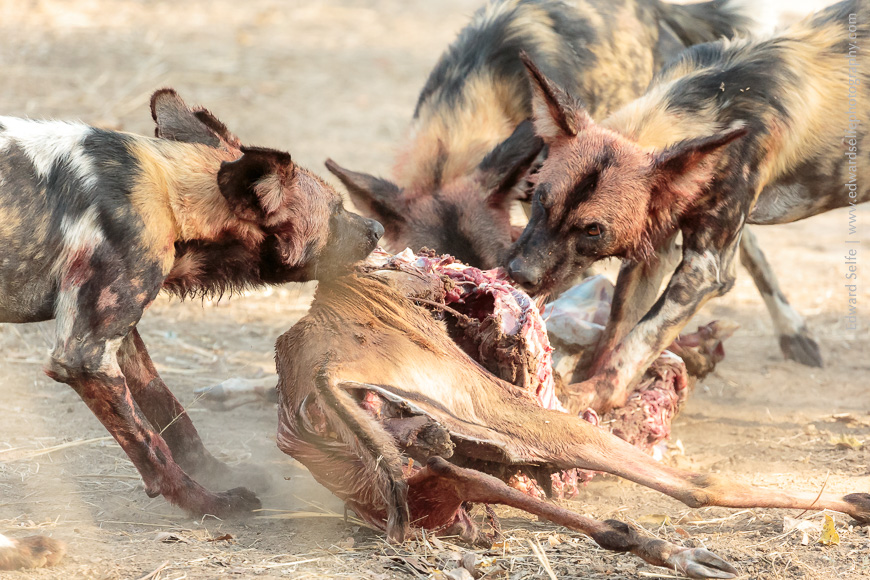
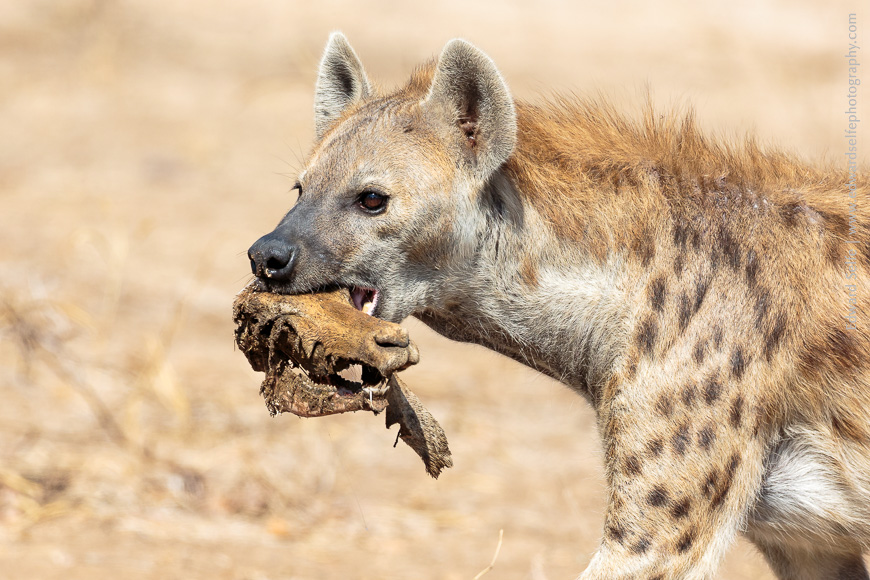
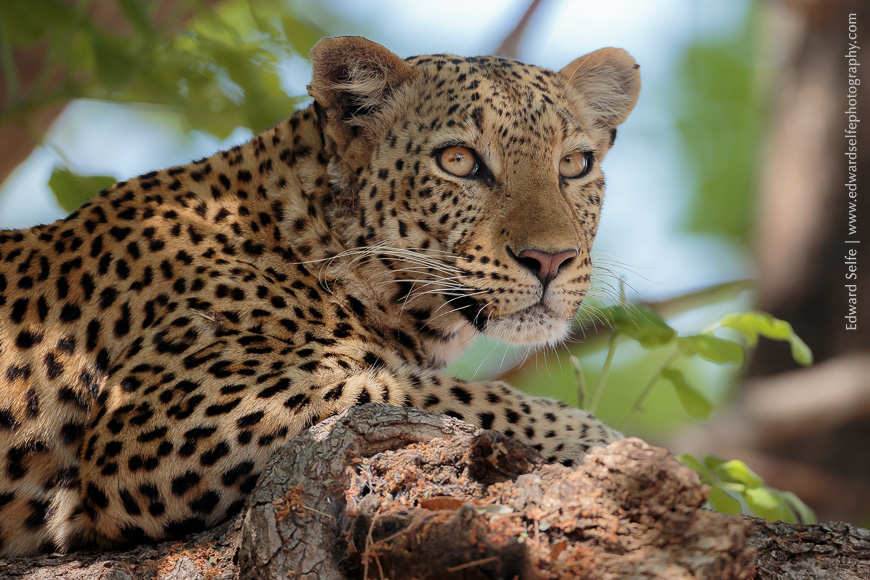
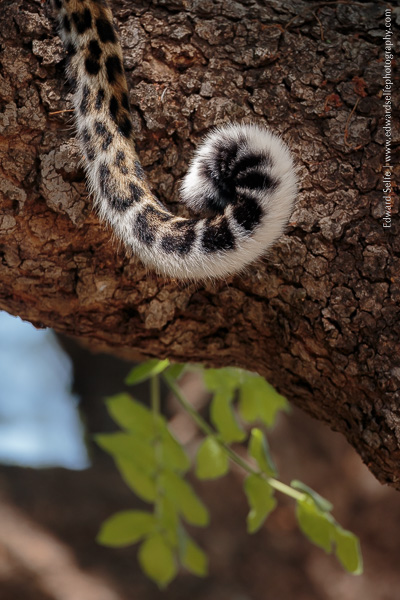
Since the first evening, the lions had been mostly absent, probably on the other side of the river. We were very pleased to find a couple of young males resting on the beach when the light came up at breakfast time one morning. There’s something very rewarding about game viewing while having coffee in front of camp!
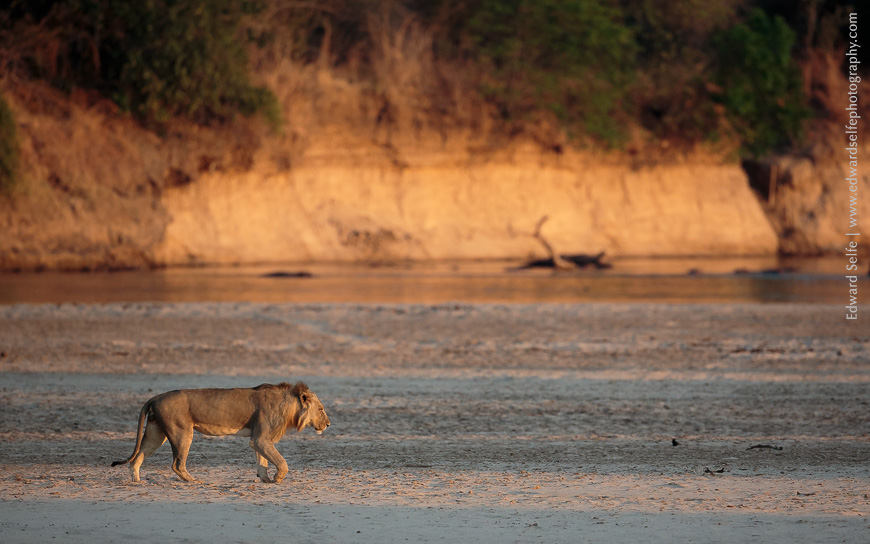
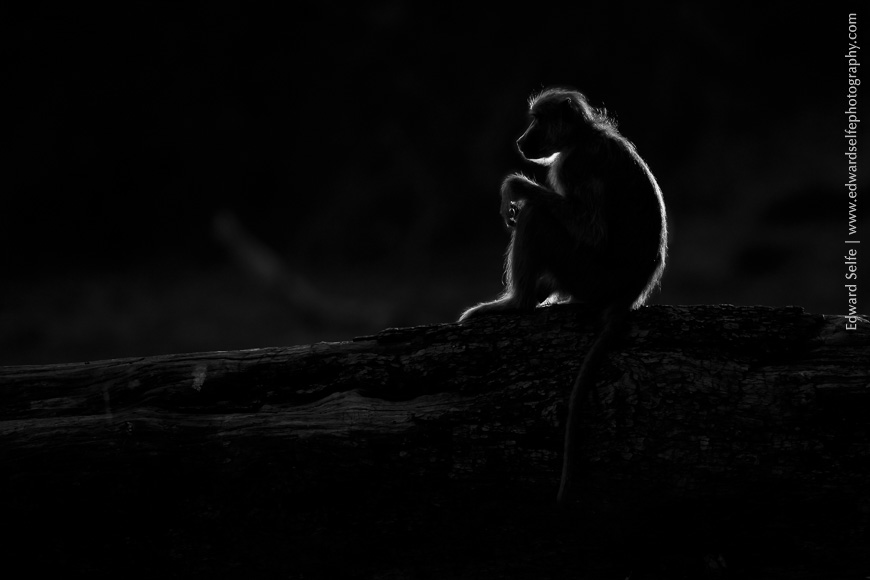
With time still on our side, we decided to make a journey inland to the Nsefu Salt Pans and try our luck with whatever was there. The salt pans can yield some wonderful sightings, or there can be almost nothing at all to see, so it’s always a gamble. This time it paid off, as we found some zebras (Caroline’s favourites!) in the soft grassland of Mtanda plain, and some very confiding cranes at the water near the salt spring.
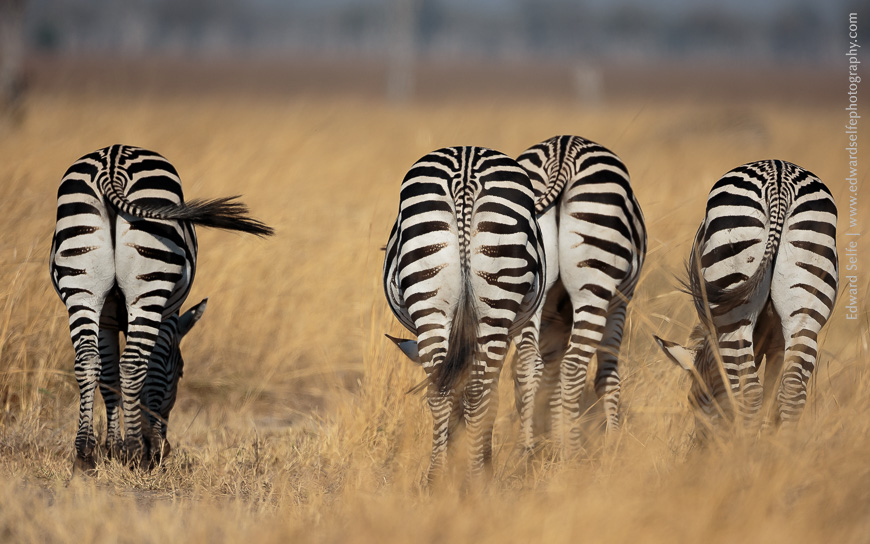
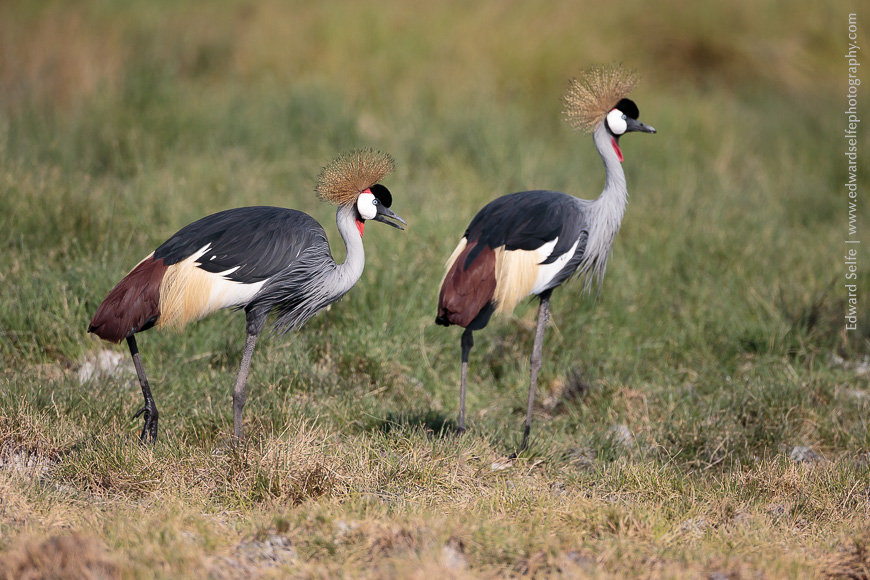
On our last afternoon, we decided to visit a Carmine Bee-eater colony to practice shots of birds in flight and the beautiful red birds returning to their nest holes. But Nsefu had some more surprises for us; as we left camp, we spotted a leopard resting in a Sausage tree and stopped to watch her for a while. It was quite warm still and we suspected she wasn’t going to descent and hunt anytime soon, so we moved on…..and found antelope on the run! Antelope don’t run from predators….except Wild Dogs! A quick scout around revealed the same 5 dogs we had seen the day before and they were resting on a bluff, where we could park below them and practice low-level shots in the soft light.
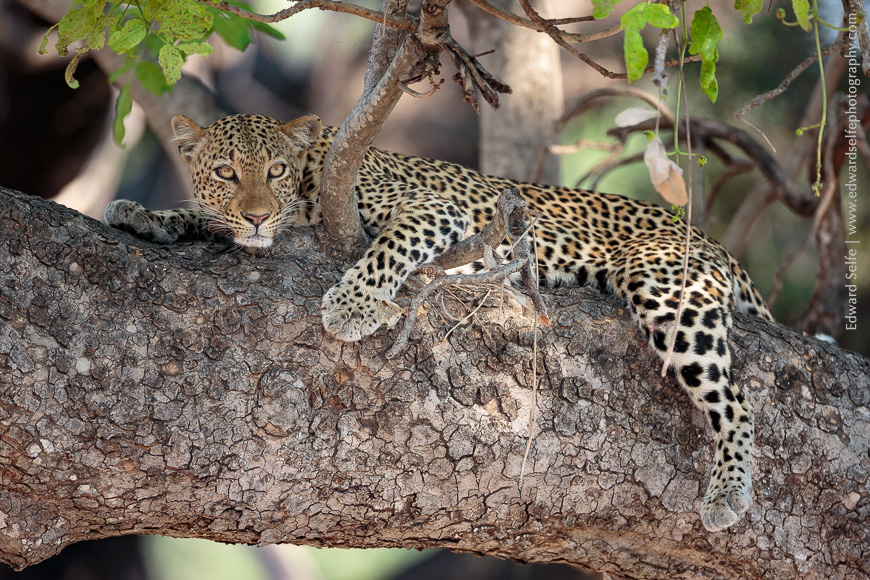
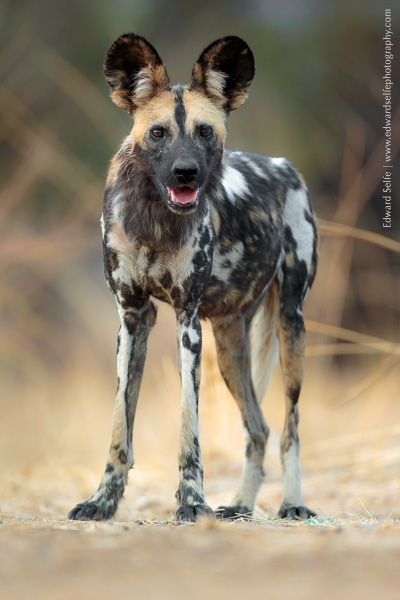
We never made it to the Carmine bee-eaters! But we consoled ourselves by following baboon alarm calls and tracking down a leopard with her cub. Due to their location, we couldn’t really get close to them, so we enjoyed watching through binoculars as they played together in small scrubby trees.
On our last morning, we decided to head south to an elephant crossing, even though we knew we might miss out on the dogs further north. We also wanted to explore new areas which we hadn’t uncovered before.
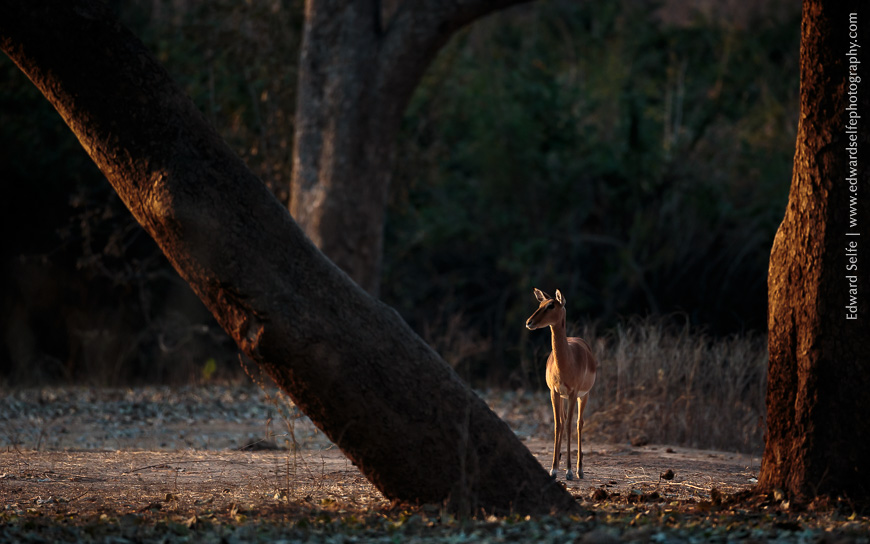
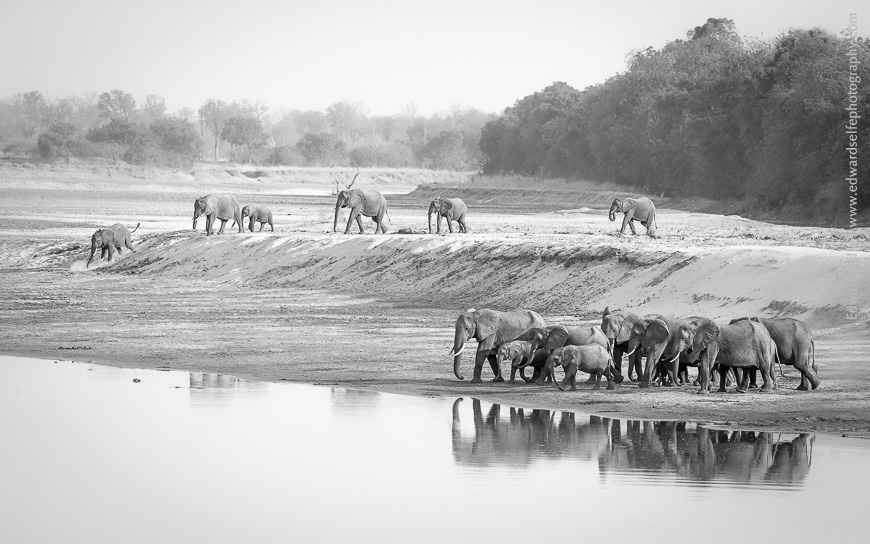
If you would like to visit any of the areas that I’ve written about in this report, send me an email via the contact page and I’ll be happy to chat about the options. Space is already booking up for next year (August and September are almost fully-booked) so don’t hesitate if you are thinking about a safari in 2018. I also have space for one couple on several trips and space for singles too….give me a shout.
Thanks for reading my trip report and I hope you enjoyed being transported into this wild place!

